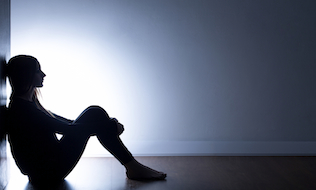

Workplace depression collectively costs Brazil, Canada, China, Japan, Korea, Mexico, South Africa and the United States more than US$246 billion each year, according to a new study by the London School of Economics and Political Science.
The survey of 8,000 employees across these countries found countries lose an average of one per cent of their gross domestic product because employees attend work while suffering from depression, researchers found.
Read: How treatment-resistant depression impacts your benefits plan
Highly educated employees cost their organizations more if they come to work while depressed, according to the study, because they’re more likely to manage other staff, who could be affected by their manager’s poorer performance.
On the other hand, employers with staff who take time off to recover have depression-associated costs are five- and 10-times lower than those whose employees show up to work while depressed.
“Interventions which support employees with depression need to be developed, adapted, implemented and evaluated across all countries to mitigate the high costs of workplace depression,” lead researcher Dr. Sara Evans-Lacko said in a release.
Read: Return-to-work strategies needed for employees with depression
The survey also found:
- The U.S. ($84.7 billion) and Brazil ($63.3 billion) experience the highest productivity losses due to presenteeism.
- 6.4 per cent of respondents in China and 7.4 per cent in South Korea reported having a previous diagnosis of depression compared to more than 20 per cent in Canada, 22.7 per cent in the U.S. and 25.6 per cent in South Africa.
- Absenteeism is higher than presenteeism in Japan because of people’s fear of losing their job if their depression is revealed at work. In fact, Japan has the highest aggregate costs associated with employees taking time off for depression, with 22 per cent (costing $14 billion) of people taking 21 or more days.
- The prevalence of depression in South Africa (25.6 per cent) is nearly two -times higher than the average (15.7 per cent) reported across the eight countries.
